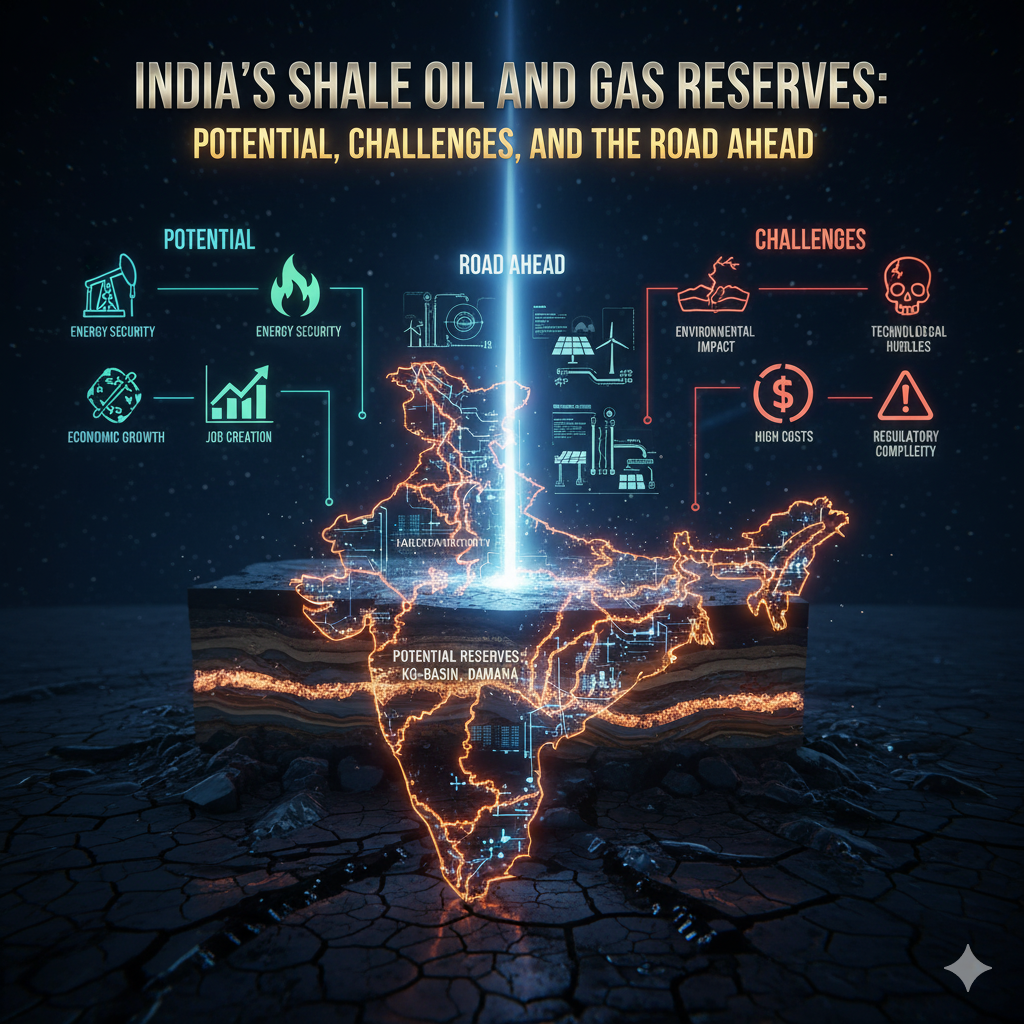Introduction
The Arctic region, encompassing the Arctic Ocean and its surrounding territories, is one of the last frontiers for global energy exploration. With retreating sea ice due to climate change, vast reserves of hydrocarbons—particularly oil and natural gas—have become accessible, making the Arctic a focal point of geopolitical, economic, and environmental interest. According to the U.S. Geological Survey (USGS), the Arctic may hold about 13% of the world’s undiscovered oil and 30% of its undiscovered natural gas.
The discovery of oil in the Arctic Sea promises economic opportunities, including energy security, regional development, and new shipping routes. However, it also carries potential environmental consequences that could have global implications. This essay critically examines the economic significance of Arctic oil discovery and evaluates its possible environmental impacts, highlighting the need for sustainable and responsible management.
Economic Significance of Arctic Oil Discovery
1. Energy Security
- Diversification of Energy Sources: Arctic oil offers countries with limited domestic reserves an alternative to traditional oil-producing regions in the Middle East, Africa, and South America.
- Strategic Reserves: Nations like the U.S., Russia, and Norway view Arctic hydrocarbons as a buffer against geopolitical instability and fluctuating oil prices.
- Meeting Global Demand: With global energy demand projected to rise, Arctic oil contributes to stabilizing supply and reducing dependency on politically volatile regions.
2. Economic Growth and Investment
- Revenue Generation: Oil extraction generates substantial revenue for Arctic nations through taxes, royalties, and export earnings.
- Job Creation: Oil exploration, drilling, and associated industries (transportation, refining, and logistics) create employment opportunities in remote Arctic regions.
- Infrastructure Development: Development of ports, roads, pipelines, and communication networks benefits local communities and stimulates regional economies.
3. Geopolitical and Strategic Importance
- Control over Shipping Routes: Melting ice opens the Northern Sea Route (NSR) and Northwest Passage, reducing transit times between Asia and Europe.
- Territorial Claims and Resource Control: Countries bordering the Arctic (Canada, Russia, U.S., Norway, Denmark) seek sovereignty over resource-rich areas, enhancing geopolitical influence.
- Energy Diplomacy: Arctic oil strengthens the bargaining power of Arctic nations in global energy markets.
4. Technological Advancement and Industry Growth
- Innovation in Arctic Exploration: Drilling in extreme conditions fosters development of advanced offshore drilling technologies, ice-resistant rigs, and autonomous monitoring systems.
- Research and Knowledge Expansion: Exploration efforts enhance understanding of Arctic geology, climate patterns, and marine ecosystems, indirectly benefiting other scientific and industrial sectors.
5. Local Economic Development
- Indigenous Communities: Potential for employment and business opportunities in transport, logistics, and service sectors.
- Tourism Boost: Energy-related infrastructure may facilitate eco-tourism and scientific tourism, although this is limited by environmental concerns.
Potential Environmental Consequences of Arctic Oil Discovery
1. Fragile Ecosystem Disturbance
- Arctic ecosystems are highly sensitive due to extreme climate conditions, slow species growth, and unique biodiversity.
- Oil extraction can disrupt habitats of polar bears, walruses, seals, Arctic foxes, and migratory birds.
- Disturbance of permafrost may lead to further greenhouse gas emissions, exacerbating climate change.
2. Oil Spills and Pollution
- Harsh Arctic conditions make oil spill containment extremely difficult.
- Cold temperatures reduce natural oil degradation rates, increasing the long-term environmental impact.
- Spills can devastate marine food webs, impacting fish populations and local subsistence communities.
3. Impact on Marine Life
- Drilling operations generate noise pollution, affecting communication and migration of marine mammals.
- Discharge of drilling mud, chemicals, and produced water contaminates the water column and seafloor.
- Arctic fisheries, which provide critical food sources, may face declines due to habitat degradation.
4. Climate Change Feedback Loops
- Arctic oil exploitation contributes to fossil fuel emissions, further accelerating ice melt.
- Thawing permafrost releases stored carbon and methane, compounding global warming.
- Loss of reflective ice surfaces increases solar absorption (albedo effect), amplifying temperature rise.
5. Threats to Indigenous Communities
- Traditional livelihoods (fishing, hunting, herding) are disrupted.
- Increased industrial activity may lead to social dislocation, pollution exposure, and cultural erosion.
- Dependency on external industries can reduce local resilience and autonomy.
6. Risk of Accidents and Natural Hazards
- Arctic operations are prone to accidents due to extreme weather, icebergs, and limited daylight.
- Emergency response is hampered by remoteness and lack of infrastructure.
- Potential for large-scale environmental disasters is higher than in temperate regions.
7. Cumulative Environmental Impacts
- Combination of oil drilling, shipping, and industrial infrastructure contributes to habitat fragmentation, pollution, and biodiversity loss.
- Noise, light, and chemical pollution create synergistic stressors on Arctic flora and fauna.
- Long-term ecological consequences may persist for decades, even after oil extraction ends.
Balancing Economic Benefits and Environmental Risks
1. Sustainable Extraction Practices
- Adoption of best available technologies (BAT) for drilling, ice management, and spill response.
- Use of closed-loop systems to minimize discharge of chemicals and waste.
2. Strategic Environmental Assessments (SEA)
- Comprehensive pre-drilling assessments to evaluate ecosystem vulnerability, species at risk, and climate impacts.
- Continuous environmental monitoring to detect early signs of ecological stress.
3. International Regulations and Agreements
- Arctic Council framework: promotes cooperation among Arctic nations for sustainable development.
- Guidelines for oil spill response, shipping regulations, and environmental protection must be strictly enforced.
- Adherence to Paris Agreement targets to ensure fossil fuel use does not exacerbate global warming.
4. Investment in Renewable Energy Alternatives
- Economic incentives from Arctic oil revenue can fund renewable energy projects, reducing global dependency on fossil fuels.
- Emphasis on wind, solar, and tidal energy in Arctic nations provides long-term environmental and economic benefits.
5. Community Engagement and Indigenous Rights
- Involving indigenous communities in decision-making ensures cultural preservation and sustainable resource use.
- Revenue-sharing models to support local infrastructure, health, and education.
6. Risk Mitigation and Disaster Preparedness
- Establishing rapid response systems for oil spills and industrial accidents.
- Training personnel in extreme Arctic conditions to reduce human and environmental risks.
Case Studies
1. Prirazlomnoye Oil Field, Russia
- First commercial Arctic offshore oil field in the Pechora Sea.
- Environmental challenges: ice conditions, oil spill risk, and sensitive marine habitats.
- Monitoring and BAT used to reduce ecological impact.
2. Alaska Arctic National Wildlife Refuge (ANWR), USA
- Proposed oil extraction sparked debate over economic gains vs. environmental protection.
- Local communities rely on subsistence hunting; oil development threatens biodiversity.
- Regulatory frameworks have attempted to balance development and conservation.
3. Barents Sea, Norway
- Arctic oil and gas exploration carefully monitored under Norwegian environmental standards.
- Emphasis on ecosystem-based management and technological innovation.
- Demonstrates that economic benefits are achievable with strict environmental oversight.
Future Prospects
- Energy Transition: Arctic oil may play a transitional role, providing energy while renewable capacity scales up globally.
- Shipping Opportunities: Melting sea ice opens Northern Sea Route, reducing shipping time and cost between Europe and Asia.
- Technological Innovation: Harsh Arctic conditions drive development of eco-friendly drilling and monitoring technologies.
- Global Climate Implications: Arctic oil exploitation underscores the trade-off between economic growth and environmental sustainability.
Conclusion
The discovery of oil in the Arctic Sea presents significant economic opportunities for energy security, regional development, technological advancement, and geopolitical influence. It offers revenue generation, employment, and infrastructure development, potentially boosting local and national economies.
However, the Arctic ecosystem is fragile, and oil exploration carries high environmental risks, including biodiversity loss, pollution, permafrost thawing, and climate change feedback. Overexploitation could lead to long-term ecological damage that outweighs short-term economic gains.
Sustainable management of Arctic oil resources requires:
- Advanced extraction technologies,
- Comprehensive environmental assessments,
- Strong regulatory frameworks,
- Community engagement, and
- Investment in renewable energy alternatives.
Only a balanced approach, integrating economic benefits with environmental protection, can ensure that Arctic oil development contributes to global energy needs without jeopardizing one of the planet’s most sensitive ecosystems.




